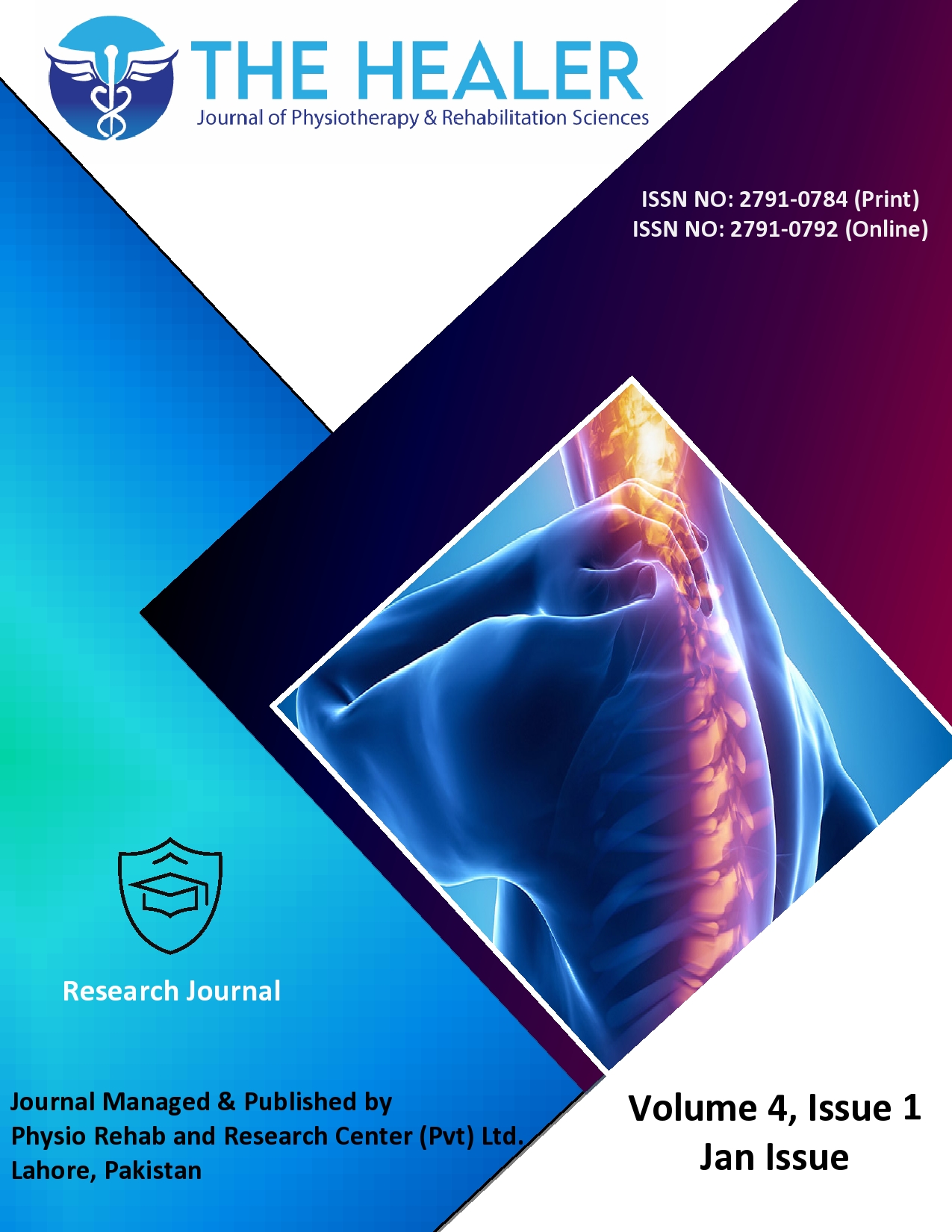Effects of Core Stability Exercise Training Using Pilates on Lower Extremity Strength and Postural Stability in Sedentary Population
Core Stability Exercise Training Using Pilates
DOI:
https://doi.org/10.55735/hjprs.v4i1.226Keywords:
core stability, pilates, postural stability, strengthAbstract
Background: It has been demonstrated that the Pilates method enhances the strength of the muscles, flexibility, somatosensation, and equilibrium. To achieve total control of the mind over the body, or muscle control, each workout component encompasses Pilates, control, concentration, focusing, flow, breath, and accuracy. Pilates stimulates the muscles in a way that replicates the precise kinetic chain activation patterns found in everyday activities. Objective: To determine the effects of core stability exercise training using Pilates on the lower extremity strength and postural stability in a sedentary population. Methods: A quasi-experimental study was conducted on 40 sedentary subjects aged 18 – 40 years using a non-probability convenience sampling technique. The participants included were only sedentary subjects, Adults over age 18-40 years, both males and females. The exclusion criteria were any fracture, recent surgery, pregnancy, history of any serious disease and illness, and tumors. Group 1 (n=20) received the core stability training using pilates whereas Group 2 (n=20) did not receive any training. Pilates were performed 4 days per week for 1 month with 10 repetitions. The outcome measures used were the the Medical research Council grading system for strength, the star excursion balance test for postural stability and balance, and the single-leg stance test for stability. These outcomes were assessed before and after intervention. Results: Using SPSS, the Shapiro-Wilks test was used to verify the normality of the data. The data is normally distributed, according to this test. According to the descriptive statistics, the participants' ages ranged from 23.28±3.09 years for the average and standard deviation. In the current study, there were 23(57.5%) women and 17 (42.5%) men. The participants' average and standard deviation of body mass index were 23.29±4.37 . Distance reached on the star excursion balance test in each direction of both groups was compared. Conclusion: It was concluded that pilates had significant effects on improving postural stability and strength among sedentary individuals.
References
Akuthota V, Ferreiro A, Moore T, Fredericson M. Core stability exercise principles. Current Sports Medicine Reports 2008; 7(1): 39-44.
Queiroz BC, Cagliari MF, Amorim CF, Sacco IC. Muscle activation during four Pilates core stability exercises in quadruped position. Archives of physical medicine and rehabilitation 2010; 91(1): 86-92.
Shea S, Moriello G. Feasibility and outcomes of a classical Pilates program on lower extremity strength, posture, balance, gait, and quality of life in someone with impairments due to a stroke. Journal of bodywork and movement therapies 2014; 18(3): 332-60.
Isacowitz R, Clippinger K. Pilates anatomy: Human Kinetics; 2019.
Yu J-H, Lee G-C. Effect of core stability training using pilates on lower extremity muscle strength and postural stability in healthy subjects. Isokinetics and exercise science 2012; 20(2): 141-6.
Willson JD, Dougherty CP, Ireland ML, Davis IM. Core stability and its relationship to lower extremity function and injury. JAAOS-Journal of the American Academy of Orthopaedic Surgeons 2005; 13(5): 316-25.
Cruz-Ferreira A, Fernandes J, Laranjo L, Bernardo LM, Silva A. A systematic review of the effects of the pilates method of exercise in healthy people. Archives of physical medicine and rehabilitation 2011; 92(12): 2071-81.
Kloubec JA. Pilates for improvement of muscle endurance, flexibility, balance, and posture. The Journal of Strength & Conditioning Research 2010; 24(3): 661-7.
Monger H, Harrison BC. The acute effect of Pilates exercise on lower extremity maximal strength. International Journal of Exercise Science 2016; 9(3): 4.
Van der Ploeg R, Oosterhuis H, Reuvekamp J. Measuring muscle strength. Journal of Neurology 1984; 231: 200-3.
Kinzey SJ, Armstrong CW. The reliability of the star-excursion test in assessing dynamic balance. Journal of orthopaedic & sports physical therapy 1998; 27(5): 356-60.
Zumbrunn T, MacWilliams BA, Johnson BA. Evaluation of a single leg stance balance test in children. Gait & posture 2011; 34(2): 174-7.
Suna G, Isildak K. Investigation of the Effect of 8-Week Reformer Pilates Exercise on Flexibility, Heart Rate and Glucose Levels in Sedentary Women. Asian Journal of Education and Training 2020; 6(2): 226-30.
Carrasco-Poyatos M, Ramos-Campo DJ, Rubio-Arias JA. Pilates versus resistance training on trunk strength and balance adaptations in older women: a randomized controlled trial. PeerJ 2019; 7: e7948.
Preeti KS, Yadav J, Pawaria S. Effect of pilates on lower limb strength, dynamic balance, agility and coordination skills in aspiring state level badminton players. J Clin Diagn Res 2019; 13(7).
El-Nashar H, ElWishy A, Helmy H, El-Rwainy R. Do core stability exercises improve upper limb function in chronic stroke patients? The Egyptian Journal of Neurology, Psychiatry and Neurosurgery 2019; 55(1): 1-9.
Erdem EU, Akbas E, Ünver B. Pilates-based training for postural stability in patients with schizophrenia. Exercise Medicine 2019; 3.

Downloads
Published
How to Cite
License
Copyright (c) 2024 The Healer Journal of Physiotherapy and Rehabilitation Sciences

This work is licensed under a Creative Commons Attribution 4.0 International License.
CC BY


